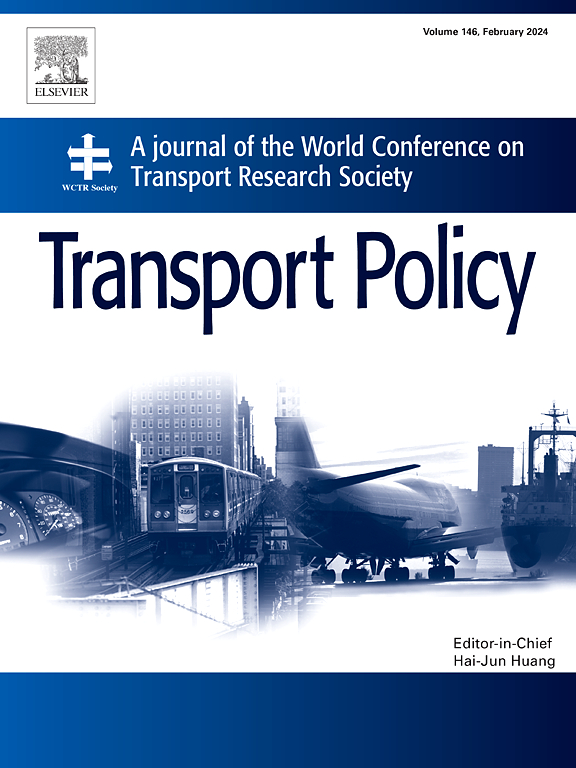2018 至 2022 年东北亚班轮运输网络的演变与稳定性
IF 6.3
2区 工程技术
Q1 ECONOMICS
引用次数: 0
摘要
港口面临着运输环境不确定性的严峻挑战。为了评估东北亚地区在港口中断情况下海运网络的稳定性,本文提出了一种基于节点故障率的网络稳定性分析模型,该模型考虑了静态和结构、动态和功能。在该模型中,重新定义了海运网络的稳定性。基于复杂网络理论,定量分析了网络的统计拓扑参数和演化过程。分析了海运网络对港口故障率的主动响应和被动适应过程。评估结果表明,港口的初始稳定性与港口的非冗余连接和独立性成正比。网络位置优势深刻影响着港口故障概率。港口故障在海运中的扩散是阶段性的,网络对港口中断的适应性强,稳定性高。这些结果有助于航运公司的战略规划者更好地规划海运路线和靠港战略。本文章由计算机程序翻译,如有差异,请以英文原文为准。
Evolution and stability of liner shipping networks in Northeast Asia from 2018 to 2022
Ports are severely challenged by the uncertainty of the transportation environment. To evaluate the stability of maritime transportation network in Northeast Asia under port disruption, a network stability analysis model based on node failure rate that considers static and structural, dynamic and functional is proposed in this paper. In this model, the stability of the maritime transportation network is redefined. Based on complex network theory, the statistical topological parameters and evolution of the network are quantitatively analyzed. The active response and passive adaptation process of the maritime transportation network to the failure rate of the port are analyzed. The evaluation results illustrate that the initial stability of the port is proportional to the non-redundant connections and independence of the port. Network location advantages profoundly affect the probability of port failures. The diffusion of port failures in maritime transportation is phased, and the network is adaptive to port disruptions and has high stability. These results contribute to better planning of maritime transportation routes and strategies for port calls by strategic planners of shipping companies.
求助全文
通过发布文献求助,成功后即可免费获取论文全文。
去求助
来源期刊

Transport Policy
Multiple-
CiteScore
12.10
自引率
10.30%
发文量
282
期刊介绍:
Transport Policy is an international journal aimed at bridging the gap between theory and practice in transport. Its subject areas reflect the concerns of policymakers in government, industry, voluntary organisations and the public at large, providing independent, original and rigorous analysis to understand how policy decisions have been taken, monitor their effects, and suggest how they may be improved. The journal treats the transport sector comprehensively, and in the context of other sectors including energy, housing, industry and planning. All modes are covered: land, sea and air; road and rail; public and private; motorised and non-motorised; passenger and freight.
 求助内容:
求助内容: 应助结果提醒方式:
应助结果提醒方式:


